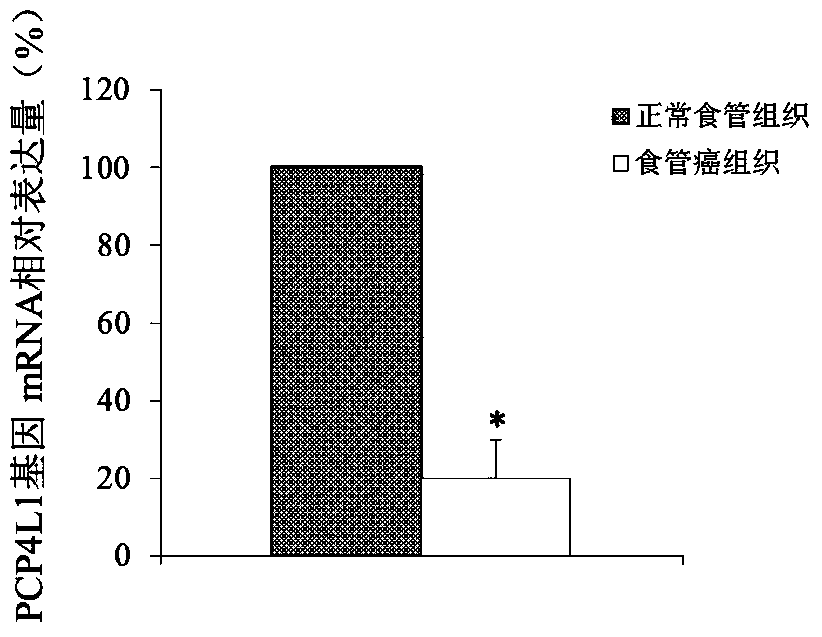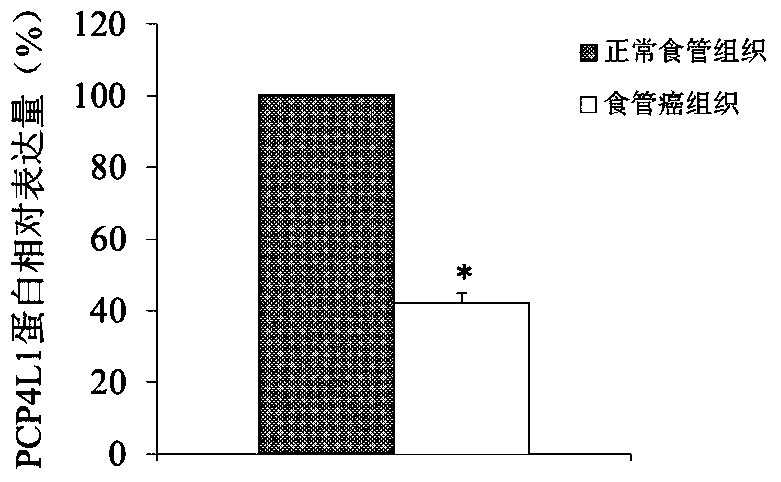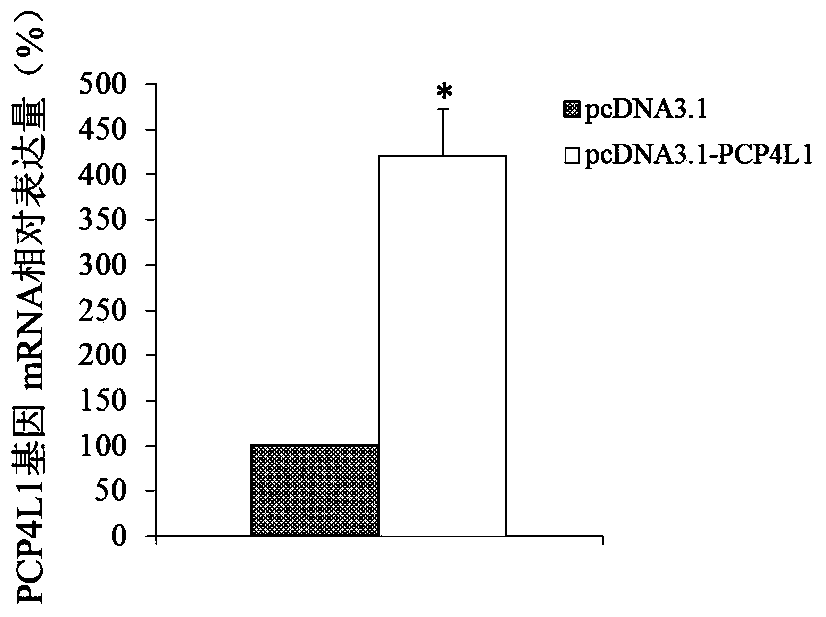Esophageal cancer markers
A technology for esophageal cancer and expression products, applied in the biological field, can solve problems such as doubts about the curative effect of surgical operations, confidence blows to patients and surgeons, etc.
- Summary
- Abstract
- Description
- Claims
- Application Information
AI Technical Summary
Problems solved by technology
Method used
Image
Examples
Embodiment 1
[0061] Example 1 Expression difference of PCP4L1 gene in normal esophageal tissue and esophageal cancer tissue
[0062] 1. Experimental materials:
[0063] Esophageal cancer tissue is the specimen removed by thoracic surgery in the hospital, and normal esophageal tissue is the specimen taken out under the gastroscope. scalpel blade.
[0064] All cases were confirmed pathologically. Including 40 cases of esophageal cancer tissue and 30 cases of normal esophageal tissue. Among them, there were 34 cases of esophageal squamous cell carcinoma and 6 cases of esophageal adenocarcinoma. Normal esophageal tissue was used as the control group. All patients were pathologically confirmed before operation, and no radiotherapy, chemotherapy and other treatments were performed before operation, and no tumors in other parts were found. All tissues were stored in liquid nitrogen within half an hour of the operation, and then transferred to a -80°C refrigerator for freezing.
[0065] 2. E...
Embodiment 2
[0087] Embodiment 2 PCP4L1 gene expression plasmid construction
[0088] 1. Construction of PCP4L1 gene expression vector
[0089] Amplification primers were designed according to the coding sequence of the PCP4L1 gene (as shown in SEQ ID NO.1). Amplify the coding sequence of the full-length PCP4L1 gene from the cDNA library of adult fetal brain (clontech company, article number: 638831), insert the above cDNA sequence into the eukaryotic cell expression vector pcDNA3.1, and connect the obtained recombinant vector pcDNA3.1 -PCP4L1 was used in subsequent experiments.
[0090] 2. Culture and transfection of esophageal cancer cells
[0091] 2.1 Cell culture
[0092] The esophageal cancer cell line ECA109 was inoculated in DMEM medium containing 10% fetal bovine serum, and placed at 37°C, 5% CO 2 Cultivate in an incubator, and when the cells reach 80% confluence, they are digested and passaged with 0.25% trypsin.
[0093] 2.2 Cell transfection
[0094] Esophageal cancer cell...
Embodiment 3
[0118] Example 3 Effect of PCP4L1 gene on the proliferation of esophageal cancer cells
[0119] 1. Cell transfection: Esophageal cancer cells were transfected with pcDNA3.1-PCP4L1 and pcDNA3.1 according to the method in Example 2.
[0120] 2. Add 3H-TdR (1 μCi / well) 24 hours after transfection, culture for another 24 hours, collect cells, add liquid scintillation fluid, and detect the cpm value with a β counter.
[0121] 3. Statistical methods
[0122] The experiments were repeated 3 times, and the results were expressed in the form of mean ± standard deviation. SPSS13.0 statistical software was used for statistical analysis. The difference between the PCP4L1 gene overexpression group and the control group Using t test, it is considered statistically significant when P<0.05.
[0123] 4. Results
[0124] Figure 5 The results shown showed that the growth rate of cells transfected with pcDNA3.1-PCP4L1 group was significantly lower than that of cells transfected with pcDNA3.1...
PUM
 Login to View More
Login to View More Abstract
Description
Claims
Application Information
 Login to View More
Login to View More - R&D
- Intellectual Property
- Life Sciences
- Materials
- Tech Scout
- Unparalleled Data Quality
- Higher Quality Content
- 60% Fewer Hallucinations
Browse by: Latest US Patents, China's latest patents, Technical Efficacy Thesaurus, Application Domain, Technology Topic, Popular Technical Reports.
© 2025 PatSnap. All rights reserved.Legal|Privacy policy|Modern Slavery Act Transparency Statement|Sitemap|About US| Contact US: help@patsnap.com



